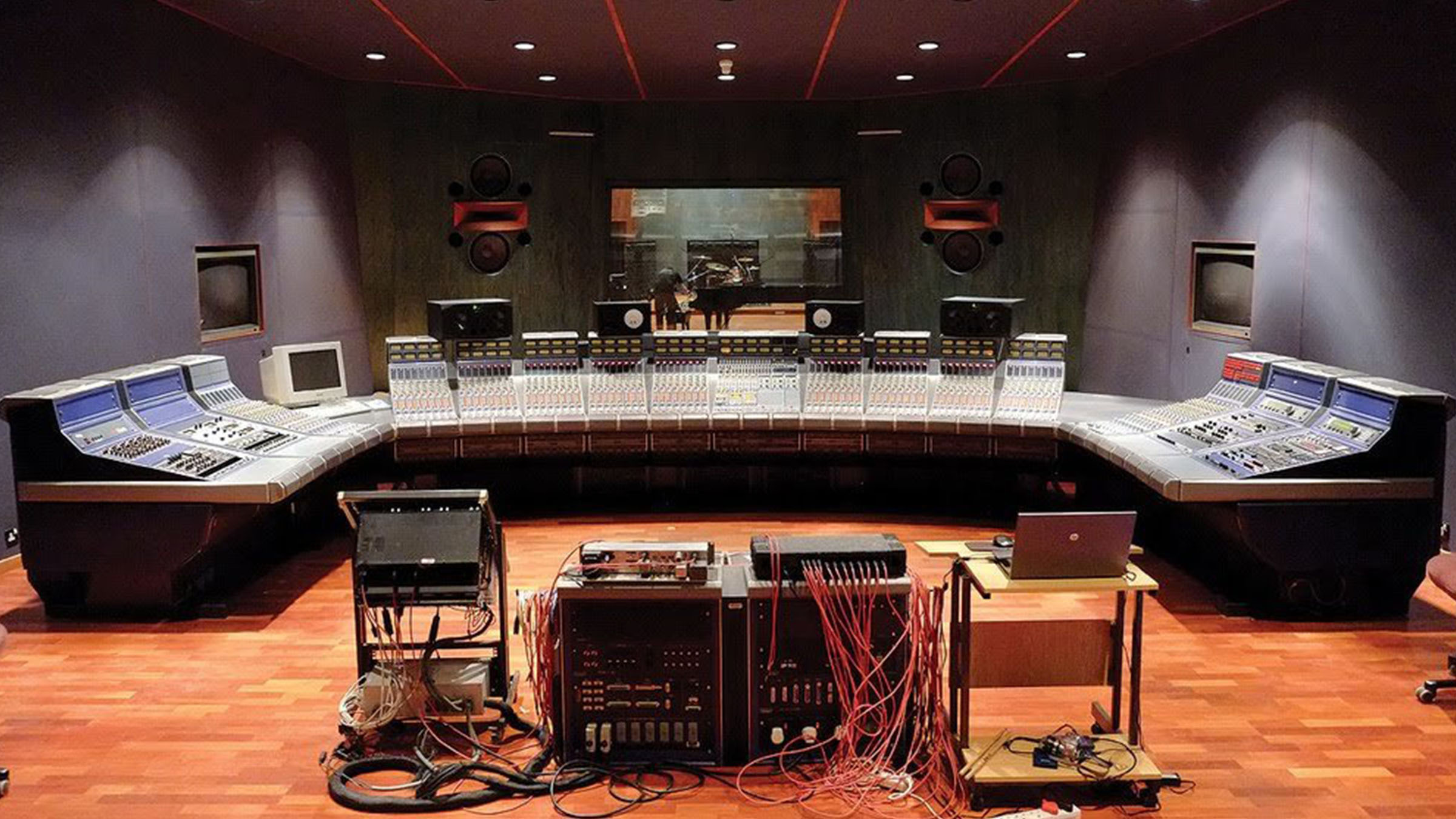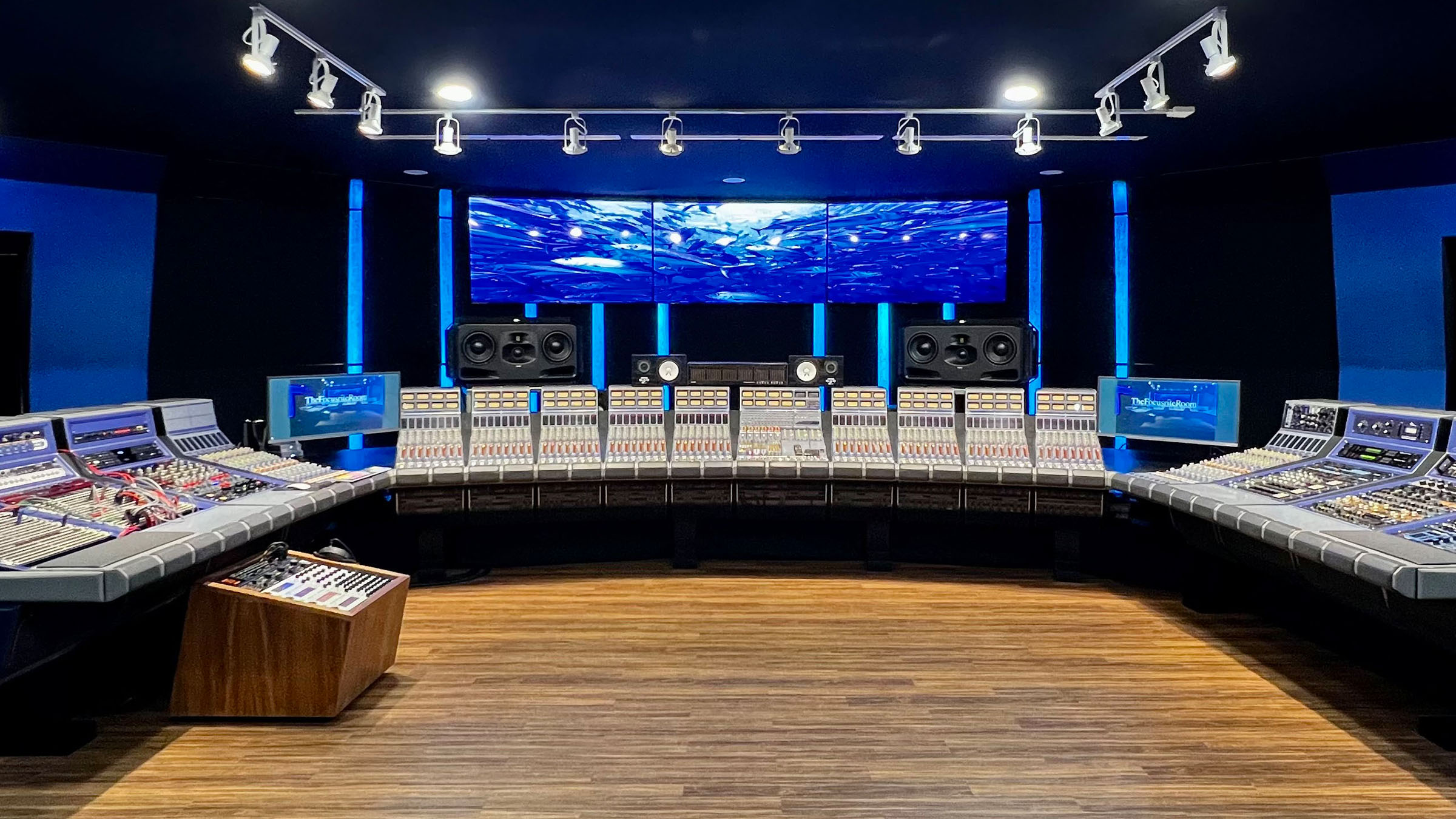Focusrite Studio Console #5 crosses the Atlantic to its new home, “The Focusrite Room” studio
“An Amazing Console in an Amazing Space” — The legendary Focusrite Studio Console is now the centerpiece of the new Focusrite Room studio in Mesa, AZ.

A Journey of 10,000 Miles
Unit #5 and one of only 10 ever made, this legendary Focusrite Studio Console was originally installed at BOP Studios in what was then Bophuthatswana, now Mahikeng, South Africa, as a key part of the world’s largest recording facility.
Recognizing the console’s unique value, studio owner and Focusrite aficionado John Aquilino passionately pursued it. After more than 30 years and a journey of 10,000 miles, he brought it back to serve as the sonic jewel in a one-of-a-kind music recording studio.
The Focusrite Room
Revived and installed in The Focusrite Room late last year—a unique 1500-square-foot control room within a 6,000-square-foot recording complex in the Phoenix area—this console has just completed its commissioning phase and is ready for a new chapter of making music and history once again.
“Bringing Number Five back was a life-changing event,” says John, owner of The Focusrite Room and Platinum Underground studios. “When I was a teenager, instead of a poster of Farrah Fawcett on my wall, I had a picture of a Focusrite Studio Console. You could say I’m a pretty big fan of the brand and its technology. Now, this console is ready for the next chapter in its life.”
BOP Studios: A Beacon of Music
BOP Studios embarked on its journey with a singular ambition: to establish itself as a world-class music production facility in one of the planet's most remote yet artistically fertile locations.South Africa surged onto the global music stage with the release of Paul Simon’s seminal Graceland album in 1986. This landmark record not only introduced the world to the rich musical traditions and talents of the region but also garnered the prestigious GRAMMY® Award for Album of the Year in 1987. Significant portions of this historic album were recorded at Ovation Studios in Johannesburg, South Africa, under the expert guidance of Simon and renowned engineer/producer Roy Halee.
Despite the challenges of Apartheid, BOP Studios emerged in 1991 through a blend of private investment and support from state and local pension funds. Its mission was clear: to serve as a beacon where African and Western artists could converge, collaborate, and create amidst state-of-the-art technology and exceptional acoustical design. Designed by the renowned architect Tom Hidley, the studio offered resort-level accommodations, setting a new standard in the industry.
At the heart of BOP’s flagship Studio 1 was the Focusrite Studio Console, a cornerstone alongside consoles from Neve (Studio 2) and SSL (Studio 3). These consoles represented the pinnacle of innovation, each being the largest of their kind ever installed at the time, ensuring unparalleled creative possibilities for musicians and producers alike.
BOP Studios saw moments of triumph in its journey. Notable artists such as Laura Branigan, Ladysmith Black Mambazo, Miriam Makeba, and the Soweto String Quartet graced its halls, alongside Disney’s iconic The Lion King soundtrack. However, amidst political and economic complexities, sustaining the studio proved challenging. As a result, BOP Studios has been closed for much of the past two decades.
Rescuing the Console
However, the Focusrite Studio Console remained remarkably intact when John discovered it. With the support of his partner in the studio, Ken Hirsch of Orphan Audio, and guidance from Phil Dudderidge, Chairman of Focusrite Audio Engineering, who acquired Focusrite from founder Rupert Neve in 1989, John embarked on a mission. In September 2019, their team journeyed to BOP Studios, where they purchased and meticulously disassembled the console over a ten-day period.
Once dismantled, they carefully transported it back to Platinum Underground, John's established studio where he had already collaborated with Hanson Hsu of Delta H Design to conceive a new studio room around the iconic console. Platinum Underground, engineered by the late Vincent Van Haaff and situated 30 feet underground since its opening in 2016, provided an ideal foundation. The new Focusrite Room, positioned above and next to the existing studio space, represents a continuation of John's vision and commitment to preserving and revitalizing this piece of musical history.
Restoration and Modernization
As expected after years of disuse, the relocated console needed some refurbishment. This included a thorough recapping (changing the capacitors), installation of new switches, and replacement of a staggering 4,600 LEDs. The restoration journey began under the expertise of Joel Gette from Thermal Relief Design in Las Vegas. However, the process was later transferred to Mesa, a Phoenix suburb, where Ken Hirsch and his team at Orphan Audio undertook the comprehensive restoration and recommissioning of the console to its former glory.
Upon integrating the console into the studio, they added additional HVAC systems, featuring custom plenums and silent-running fans to maintain a steady temperature between 72 to 74 degrees Fahrenheit. The original towering 7-foot-tall power racks were replaced with a modern, space-efficient 3-foot setup meticulously designed by Ken Hirsch.
To enhance functionality, the ancient GML automation gave way to the Tangerine Automation Interface for GML Automation from THD Labs. This innovative solution seamlessly integrates with the console’s faders on a per-fader, bucket-by-bucket basis, transmitting all control data via a USB bus to the computer.
“The automation is now seamless and transparent between the hardware of the desk and the user’s DAW,” John explains. “Any user can come in to the studio, fire up a session, load up this plugin and just go, and not have to worry about knowing some archaic, proprietary software.”
The Focusrite Studio Console came back to life late last year and did a series of local productions with John, an accomplished engineer for artists including Metal Allegiance, Sacred Reich, and SoulFly, at the board. “I needed a great team to make this happen, like TRD, everyone at Ken’s shop, and of course, Phil,” he says. “But the result is the kind of console that made classic recordings. You cannot duplicate this in today’s business — the console’s cabling is silver wire... kilometers of it! There is nothing like it anywhere. And now, it's an amazing console in an amazing space.”

A Fusion of Classic and Modern
As remarkable as the resuscitated Focusrite Studio Console is, that’s far from the only Focusrite technology in the facility. John explains the studio is currently implementing Dante® connectivity between both the new Focusrite Room and The Platinum Underground‘s existing SSL control room, large tracking room, and isolation booths. This initiative is complemented by the deployment of RedNet A16R and RedNet HD32R interfaces throughout both studios.
"This will allow us to smoothly move projects between spaces, as well as increase flexibility of session management," he adds. The coexistence of vintage and contemporary Focusrite gear within the same facility is a perfect fusion of classic craftsmanship and modern innovation.
The studio also features 12 Focusrite ISA 215 dual rack mount mic pre-EQs, providing a total of 24 channels equipped with the original ISA 110 mic pre/EQ circuits (each 215 unit contains two of these circuits). Additionally, John has selected the ADAM Audio S5H speakers– part of the Focusrite family – as the main monitors for The Focusrite Room.
"They are absolutely amazing speakers," he remarks enthusiastically. "Just stunning sounding. They are the perfect complement to #5. Incredible depth, amazing detail, and the imaging is spectacular."
A Testament to Innovation
The Focusrite Studio Console has left a profound impact on countless lives and careers, cherished by engineers, producers, and musicians fortunate enough to work with it firsthand. Inspired by Rupert Neve's original ISA 110 EQ processor design, the console stands as a testament to British audio-console innovation at its pinnacle and its sound lives on in all Focusrite interfaces today. For those eager to delve deeper into its legacy, you can watch a documentary exploring its journey here.
